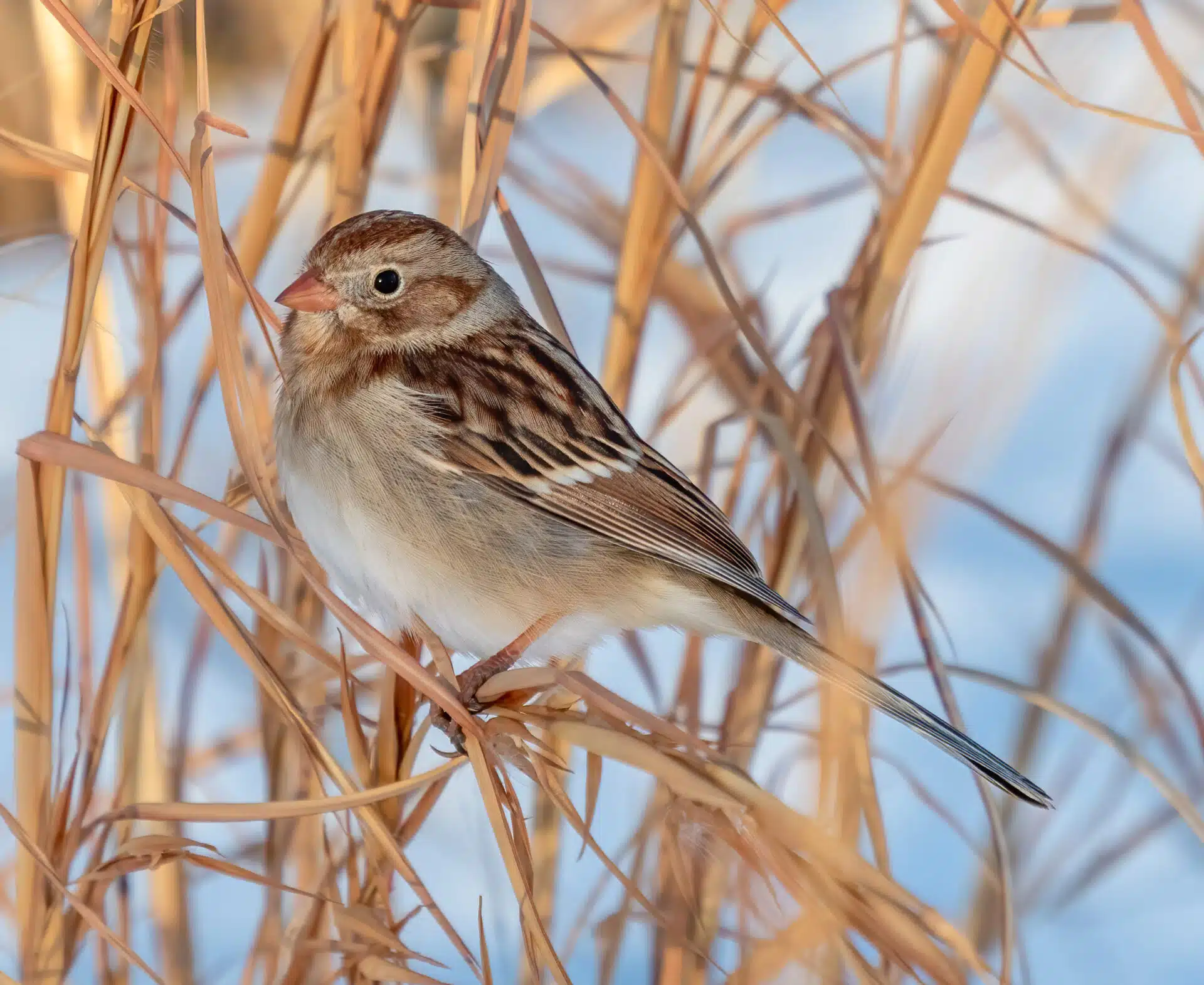Nature Profile
North America
Field Sparrow
Spizella pusilla

Voice: Song: Males: downward whistles descending to a bouncing ball trill Call: Both sexes: Seep or Chirp
Male field sparrows are easy to spot on an early spring or summer morning, perched low, singing loudly in open habitats. Their descending bouncing ball trill can be heard in shrubby grasslands, overgrown agricultural fields, fencerows, and forest edges. They tend to sing from prominent perches like the tops of small trees or shrubs.
Field sparrows eat mainly seeds and insects by foraging on the ground. During spring and summer, half of their diet are insects, including butterflies, beetles, grasshoppers, spiders, and snails. Besides foraging on the ground for insects, they also pounce on insect prey from low perches. During the winter, more than ninety percent of their diet are seeds. Grass seeds such as crabgrass and foxtail are the most common plants they consume.
In early May, male field sparrows arrive on the breeding grounds ahead of the females to set up territories. Unlike the females, males tend to return to breed in the same territories each year. Field sparrows are almost always monogamous except for first-time breeding males. If first-time males pair late, they may end up caring for young from a different male. Field sparrows often breed more than once a season. In early spring, nests are often on the ground, where they are less visible. As the breeding season progresses, they construct new nests higher off the ground to help with predation.
In early spring, females construct nests on the ground in clumps of grass or at the bases of shrubs. Males will sometimes help by providing nesting materials. As grasses get taller and shrubs and trees leaf out, the field sparrows build their nests up to four feet off the ground. Later in the season, nest locations are found in blackberry bushes, honeysuckle, and small trees such as dogwood, hawthorn, and elms. It can take five to eight days to construct the first nest; subsequent nests take less time to build. Nests are cup-shaped with coarse grass and leaves as the base. The nest is lined with more delicate grasses, roots, and hairs. The nest measures three to eight inches across and two to four inches high, with a cup depth ranging from one to two inches.
Females lay three to five brownish speckled, white to pale blue eggs. Females incubate the eggs for ten to eleven days but can incubate up to seventeen days in colder weather. Both parents feed the young a diet of spiders and insects. Young leave the nest after seven to eight days. They remain near the nest site for several days more until they can fly at thirteen-fourteen days. Males care for the fledglings while the females re-nest. If re-nesting is successful, field sparrows can have two sets of young per season, sometimes even three sets.
Field Sparrows are common birds in open habitats. Partners in Flight estimates a global breeding population of 7.6 million. However, according to the North American Breeding Bird Survey, field sparrows have seen an estimated decline of over two percent since 1966. This decrease could be due to the human-dominated landscape. Field Sparrows tend not to nest in areas such as tilled agricultural fields and suburbs. Field sparrows breeding territories can best be maintained by leaving some woody vegetation in fields undergoing succession.




